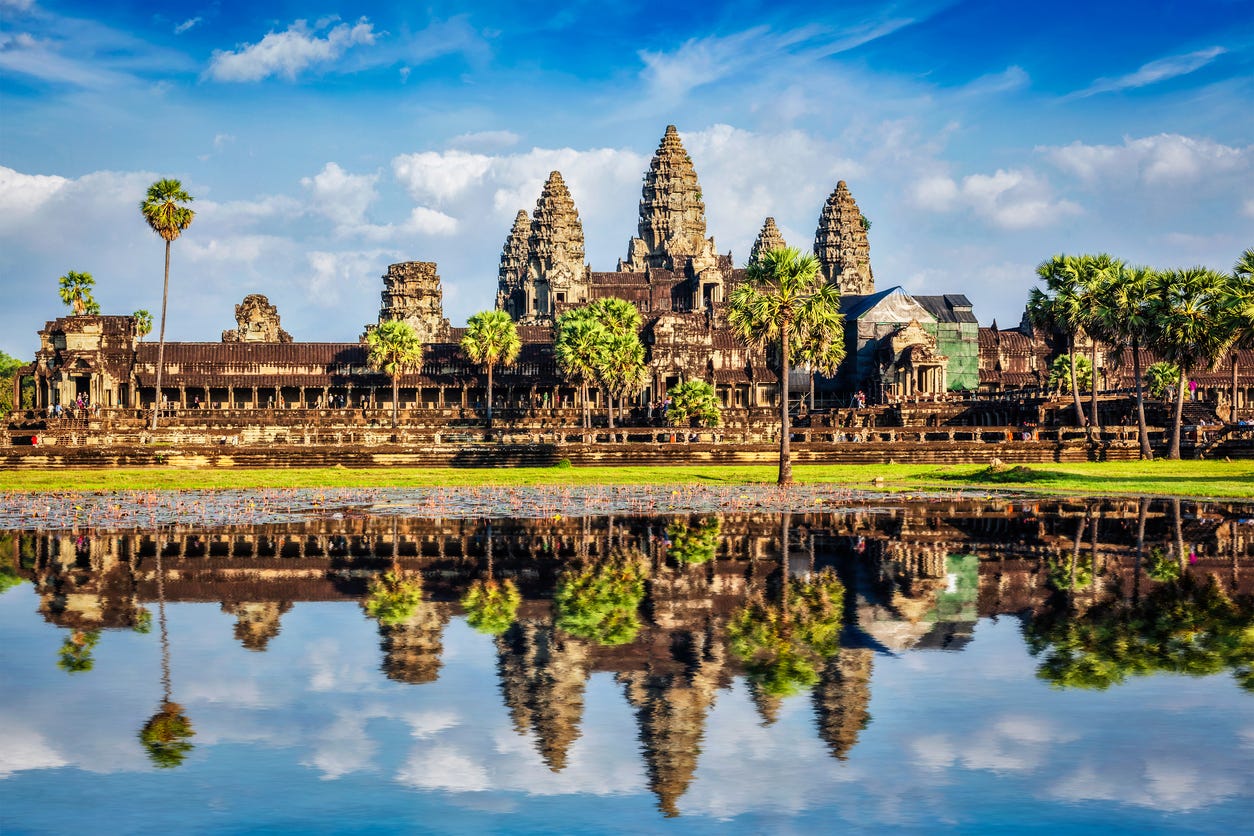$250 Rent, $1 Coffee, and a Temple View: Life in Siem Reap
A firsthand look at life, costs, and community in Cambodia’s laid-back temple city.
My name’s Ryan, and I live in Phnom Penh, Cambodia—but this week, I’m in Siem Reap, one of the country’s most livable cities and, as it turns out, one of its most underrated places to retire.
My wife and I have been in Cambodia for about four and a half years. She teaches, and lately, we’ve been having the same conversation many couples have at this stage of life: Where do we want to end up when she retires?
Siem Reap keeps coming up.
It’s got everything—Western-style cafés, restaurants, grocery stores—and still holds on to the charm of Southeast Asia. Life here feels both comfortable and exotic, and best of all, affordable.
Life Between Temples and Tuk-Tuks
This morning, I walked through Wat Bo, a temple complex alive with color and sound for the Chum Ben holiday. People were coming and going in the rain, bringing food for the monks and taking time to pray. In Cambodia, there are really only two seasons: hot and wet. The downpours can be intense, but they don’t last long. Everything is lush and green afterward.
Expats love the Wat Bo neighborhood because it’s right near the action—five or ten minutes from Pub Street, the Old Market, and the river. The city’s crown jewel, Angkor Wat, is just a short drive or bike ride away. And if you’ve lived here for two years, you can visit it all for free. Imagine having the world’s largest religious monument practically in your backyard.
A Look at Local Living
I stopped by a small apartment complex to get a sense of housing costs. The first unit—a furnished one-bedroom with balconies, a Western-style bathroom, and plenty of natural light—rents for about $600 a month on a six-month lease. The two-bedroom version runs about $850, with access to a pool and gym included.
For those on a smaller budget, there are plenty of simpler options. My friend Sean, a Canadian expat, pays $250 a month for his downtown apartment, just a four-minute walk to Pub Street. “It’s everything I need,” he says. Electricity runs him about $50, and he estimates his total monthly expenses at around $500 to $600, including meals, movies, and the occasional night out.
He’s not exaggerating about how far money stretches here:
A restaurant meal: $1–$3
Draft beer: 50–75 cents
Coffee: about $1
Movie ticket: $1–$3.50
And if you don’t feel like walking, a 15-minute tuk-tuk ride across town costs about 75 cents.
Easy Days, Active Lifestyles
Later, we hit the Royal Sports Club, a massive complex with tennis courts, pickleball, paddle, basketball, and a full gym. Courts rent for about $10 an hour ($20 after 4 p.m.), but if you split that with friends, it’s just a couple of dollars each. Health and fitness are easy here—daily walks along the river, yoga in the park, and open-air exercise machines scattered around the city.
Dining in Siem Reap
When it comes to food, variety is the rule. One day it’s Chinese noodles for $3.75, the next a mango-avocado salad or a plate of fried noodles for under $3. We found perfect Sunday roasts for $8 and big breakfasts (coffee included) for $5. The French influence lingers, too—you can pick up fresh pasta or quiche at Paris Bakery.
Eating well here isn’t a luxury. It’s just daily life.
The Expat Perspective
In the evening, I caught up with friends Jeremy and Claire, who’ve lived here for several years. They’ve also spent time in Phnom Penh, Kampot, and Kep, but Siem Reap, they say, strikes the best balance.
“It’s not as busy as Phnom Penh,” Jeremy told me, “but it’s much easier to live than Kampot or Kep. You can get to a great restaurant in ten minutes and still live quietly.”
Claire added, “The expat community here is diverse. You find retirees, teachers, people in NGOs, a real mix of men and women. It feels balanced and welcoming.”
Quiet Charm, Global Access
By morning, I was back on the riverfront, walking past joggers and cyclists. Siem Reap is one of the few Cambodian cities with real sidewalks—and bike lanes. Along the way, I passed banyan trees wrapped in colorful fabric, locals doing their morning workouts, and even a tree full of bats known as “flying foxes.”
It’s calm, green, and full of culture. At night, the city lights up again—Pub Street, karaoke rooms, cozy bars tucked into narrow alleys. There’s always something to do, but no sense of rush.
Life here feels slower, easier, more intentional.
If you’re thinking about early retirement, or just stretching your dollar while living somewhere warm, friendly, and filled with history, Siem Reap might surprise you.
Editor’s Note: Want to know what life abroad really costs—and how to make it happen? Stories like Ryan’s appear every month in International Living. Get real insights and inspiration when you subscribe here.




This is a place I want to visit, and have wanted to for years!